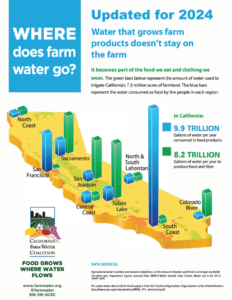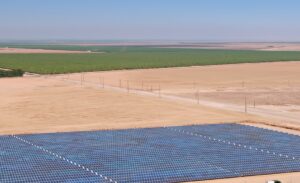CFWC recently released two short videos in a series aimed at educating the public on ways the new bi-partisan infrastructure package is aimed at investing in California’s water supply. The recent drought is showing areas where California’s water supply resilience is failing.
The bi-partisan infrastructure bill gives us a once-in-a-generation opportunity to help promote drought resiliency, adjust to climate change, protect the environment, mitigate wildfires, maintain a safe, healthy, local food supply and ensure communities have the water they need to run their homes and power their businesses.
Watch the videos
Capture water in wet years to use when it’s dry
It will expand our ability to capture both surface and groundwater in wet years for use in dry ones. Climate change is bringing us drier dry years, wetter wet years. We must capture more water during times of excess for use in times of scarcity. Storage projects large and small will improve water supply, expand flood control, improve downstream water quality and provide ecosystem benefits.
The infrastructure package will fix our existing water storage and conveyance which is crumbling and in desperate need of repair. The system of pipes, canals and other infrastructure we rely on to deliver water to our taps is more than 50 years old and failing. Improving our water supply doesn’t help anyone if we can’t deliver it.
Improve forest health and reduce the risk of wildfires
It will help improve forest health and watershed management. Clean, reliable water supplies start with snow and rain in our upper watersheds. Poorly managed forests reduce Mother Nature’s ability to deliver winter storms to rivers, streams, and reservoirs.
Water supply infrastructure for farms, food, and people
It is important to protect the availability of a safe, healthy, local food supply. More than 80% of our domestic fruits, nuts and vegetables are grown west of the Continental Divide. California farmers have decreased water use by double digits since 1980 and still, the state has been forced to completely eliminate water supplies for thousands of family farms this year. If we fail to fix this problem, it will mean less locally grown food in our grocery stores and restaurants and dependence on more imported foods, which are often not grown under the same safety standards as California farm products.
And it will ensure small, rural and disadvantaged communities have access to clean water. In California, nearly one million people lack access to clean drinking water, with most of them living in disadvantaged or underserved communities. When drought hits, they are among the first to lose water.



